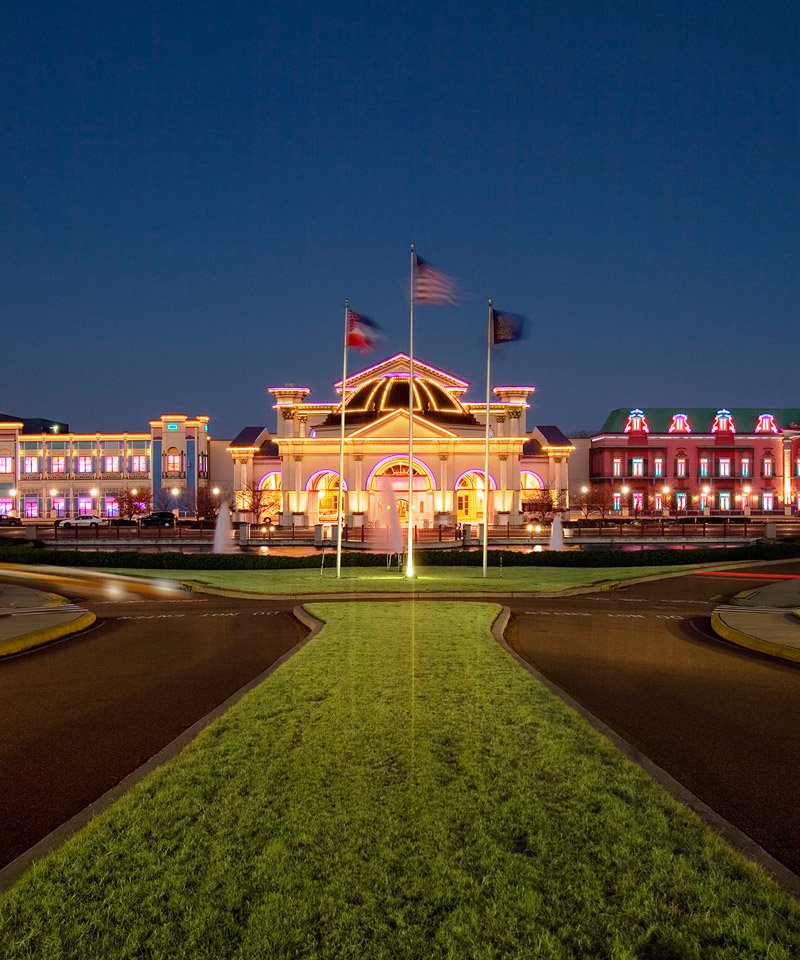
The closing of Harrah’s Tunica Casino in June marks the end of an era of excess in Tunica County. It was the biggest property and the closest one to Memphis.
The two hotels, restaurants, and casino are empty, and 1,000 employees are out of work. There was no attempt to blame this on the recession (2008), the flood (2011) or the gaffe by Paula Deen (2013).
“The difficult decision to close follows persistent declines in business and increased competition,” Harrah’s parent company, Caesars Entertainment, said in its official statement.
The increased gambling competition comes mainly from Southland Park in West Memphis, which is several miles closer to the feeder markets for those who don’t mind gambling at a dog track. Turnabout is fair play. Twenty years ago, Southland Greyhound Park was clobbered by the casinos. Other competition for entertainment dollars comes from a more upscale entertainment venture — FedEx Forum and the Memphis Grizzlies. Score one for Memphis and the NBA.
Harrah’s, which was once a division of Memphis-based Holiday Inns, didn’t build its Tunica namesake. The original operator in 1995 was Grand Casinos, run by an outsider from Minnesota named Lyle Berman. A part-time professional poker player, Berman titled his biography I’m All In. Was he ever.
The Grand opened at a time when “riverboat” gambling was still a novelty and that definition was being tortured to include facilities on man-made ponds nowhere near the river. Grand, which had two more casinos on the Mississippi Gulf Coast, was closest to Memphis and just over the Tunica County line so no competitor could get any closer. Or at least not until Arkansas liberalized its gambling laws.
Berman’s grand strategy was to make Grand a category killer with more hotel rooms, more land, more slots, more non-gambling amenities, more colors on the gaudy exterior, and more customers than the competition. And more debt and operating costs, which proved unsupportable when business declined. The complex included a convention center, golf course, auditorium, trap-shooting range, acres of parking lots, bargain-priced buffets, and a nursery and arcade for children on the mistaken assumption that gambling would appeal to families.
Rivals such as Horseshoe and Gold Strike were not awed, however, and built hotels and casinos that looked less like barges and more like something you might see in Las Vegas. Fueled by low gambling taxes (12 percent versus 21 percent in Louisiana and as much as 50 percent in other states), “Mississippi Miracle” hype and a 4 percent share of gross casino revenues, Tunica County rebuilt its downtown, schools, public facilities and even added an airport that serves a few charter operators.
Gambling in Tunica is in decline but far from dead. After the closing of Harrah’s there are still eight casinos in the Tunica and Coahoma counties. Caesars still operates the Horseshoe and Tunica Road House casinos a few miles south of Harrah’s. MGM Resorts Entertainment has Gold Strike, and Boyd Gaming has Sam’s Town. You can get a hotel room at Gold Strike for $69 in the middle of the week, but it will cost you $169 on a Saturday in July, and competitors have similar mark-ups.
“From a competitive standpoint, this should shore up the rest of the market,” said Bobby Leatherman, a Memphis attorney whose family sold property to the first casinos in Robinsonville, now known as Casino Center. He owns an interest in another Tunica casino golf course that “picked up 1,000 rounds after the closing.”
Look for more casinos to close in Tunica in the next year or two. There are signs that the market is tapped out. The stock of Boyd Gaming, which traded at $54 a share in 2007, now trades at about $10. The company’s financial statements talk about a future in online gambling and gambling apps. The American Gaming Association is launching a “Get to Know Gaming” campaign to “tell the story of gaming’s impact on communities across the country through cutting-edge communication techniques informing policymakers, opinion leaders and other key influencers.”
In Mississippi, the problem is not that the story is unknown; the problem is that it’s grown a bit stale after 22 years.
